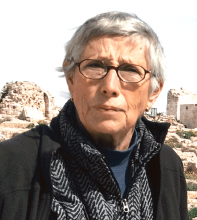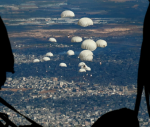You are here
Blockade of Gaza can be lifted now
Aug 27,2014 - Last updated at Aug 27,2014
Politicians and pundits wrongly claim that Hamas and its armed allies secured nothing in the latest Egyptian ceasefire plan beyond what was offered in its initial proposal, put forward in mid-July. These people are wrong — self-deluded — for many reasons.
Hamas’ acceptance of the first plan would have been a humiliating admission of defeat.
Since Egypt consulted only Israel on terms, the plan would have amounted to an imposition on the Palestinian armed groups at a time Israel was blasting Gaza from air, land and sea, and Hamas and Islamic Jihad were firing hundreds of mortars and missiles into Israel.
The plan called for a halt to hostilities on July 15, one week into the Israeli assault, followed by negotiations on easing Israel’s siege and blockade and Egypt’s closure of the Rafah crossing.
Hamas took the view that the proposal was not “worth the ink it was written with” because Israel had repeatedly promised to “ease” its blockade of Gaza but failed to deliver on its pledges.
Hamas’ spokesman Sami Abu Zuhri said at the time: “It’s not logical to ask people who are under attack to cease fire and then negotiate terms that were not respected in the past by the Israelis,” a reference to the disrespected 2012 truce deal.
Hamas and its armed allies demanded that the ceasefire text include the lifting of the siege and blockade and not be put off to negotiations sometime after the conflict ended.
Israel responded to Hamas’ rejection of the proposal with a full-scale ground invasion of Gaza, for which Tel Aviv was well prepared.
Hamas countered this operation, killing 64 Israeli soldiers, the highest death toll suffered by Israel in all its Gaza campaigns.
Israel also received upsetting surprises when its forces discovered the extent and sophistication of cross-border Palestinian attack and internal communications tunnels, modelled on the tunnel warfare conducted by Lebanon’s Hizbollah movement during Israel’s 2006 assault on Lebanon.
When, after 17 days, Israel withdrew its forces from Gaza, the Palestinians had fired more than 3,000 missiles into Israel.
As Israel troops pulled out, Israel announced a seven-hour pause to allow the delivery of humanitarian supplies, but troops continued to conduct operations and UN schools sheltering displaced Palestinians were attacked and women and children were killed, causing international outrage that constituting a public relations disaster for Israel.
For the next 24 days, Israel tried to defeat Hamas and its allies by applying force in various ways.
Israel carried out massive bombing, flattening entire neighbourhoods in the north, east and south of Gaza.
More than half a million of Gaza’s 1.8 million citizens were driven from their homes. Thousands of houses were destroyed, factories gutted, and agricultural land plowed and seeded with bombs.
Israel also targeted Gaza’s small electricity plant and sewage treatment and water purification facilities.
Israel hoped collective punishment of a population trapped in the narrow coastal strip would force Hamas to concede. But this tactic failed.
While Israel blitzed Gaza, Palestinian fighters continued firing rockets, mortars and shells into Israeli communities along the border with Gaza. Seventy per cent of their residents fled and another 20 per cent of settlements at some distance from Gaza also left for safer locations.
Last week, Israel tried and failed to assassinate Muhammad Deif, head of the Izzeddine Al Qassam Brigades, Hamas’ military wing, but succeeded in slaying three senior officers in the Rafah district command.
This also failed to defeat Hamas and its allies.
Finally, Israel launched what it called a “war of attrition”, bombing mosques and schools, and destroying three high-rise apartment blocks housing middle class families.
By this time, Hamas and its allies had decided to accept the amended Egyptian ceasefire plan, which had been on the table since early August.
This proposal included the Palestinian demand for opening the Rafah crossing between Egypt and Gaza, and the Israeli crossing, to allow a heavy flow of humanitarian aid and reconstruction materials into Gaza.
The text also called for the extension of Gaza’s fishing grounds from three to 12 nautical miles from the shore, and mandated new negotiations in a month’s time on the reopening of Gaza’s airport, construction of Gaza’s port, release of Palestinian prisoners and repatriation of the remains of two Israeli soldiers.
Fearing that this plan came too close to Hamas’ demand for an end to the siege and blockade, Israel stalled until Tuesday.
Two Israelis died from Palestinian rockets an hour before the ceasefire came into effect, increasing the civilian toll in Israel by 50 per cent, to six.
Not trusting their government to protect them, residents of the Gaza border communities refuse to go home.
Little wonder that Hamas declared military victory Tuesday night.
Hamas also won on the political plane.
Having been excluded from consultations on Egypt’s original ceasefire proposal, Hamas called the shots in the multi-party Palestinian delegation engaged in Egyptian-mediated proximity talks with Israel.
Both Egypt and Israel had to concede that Hamas and Islamic Jihad were the main interlocutors because their fighters were involved in the conflict in Gaza.
Hamas’ political and military figures in Gaza and Doha were consulted by Hamas members of the delegation, which was headed by Fateh’s Azzam Al Ahmad on behalf of the Palestine Liberation Organisation, which had been asked to provide cover for Hamas and Islamic Jihad.
Furthermore, since Hamas and Fateh are partners in the Palestinian consensus government, Israel and the Western powers have to deal with Hamas when negotiating with this government, which is due to assume power in Gaza, with Hamas’ approval.
Hamas has said it is prepared to hand over the governance of the strip as long as its military wing remains intact.
After its military victory in Israel’s latest Gaza war, no Palestinian is in a position to demand that Izzeddine Al Qassam be disarmed and Gaza demilitarised.
Finally, Israel has already suffered serious criticism due to its onslaught on Gaza, and as families dig out corpses and inspect the ruins of their homes and lives, Israel is certain to come under attack for waging a war on the imprisoned and deprived people of Gaza.
As the Palestinian delegation’s Qais Abdel Karim (Abu Laila of the Democratic Front) told this correspondent, “the full horror of Gaza will be revealed” when there is an end to the fighting.
The Goldstone report that condemned Israel’s 2008-09 war on Gaza will be followed by other, more condemnatory reports by UN and international human rights organisations.
Political pressure on Israel to lift totally the siege and blockade is building.
France and Germany have included this Hamas demand in their draft UN Security Council resolution now under consideration, with Jordanian and US texts.
Europe seems to be no longer prepared to tolerate Israel’s “disproportionate” assaults on what international law identifies as “civilian objects” and considers war crimes and crimes against humanity.
The Palestinian Authority speaks of signing the Rome treaty of the International Criminal Court and prosecuting Israel and its leaders.
The US — which resupplied Israel with arms and munitions during the conflict — will, of course, do its best to protect Israel from censure and punishment but, if Jordan, the Arabs and Europe stand together, Israel’s siege and blockade of Gaza can be lifted now.
More than 2,140 Palestinians, 73 per cent of them civilians, paid with their lives for this to happen after eight long years.













